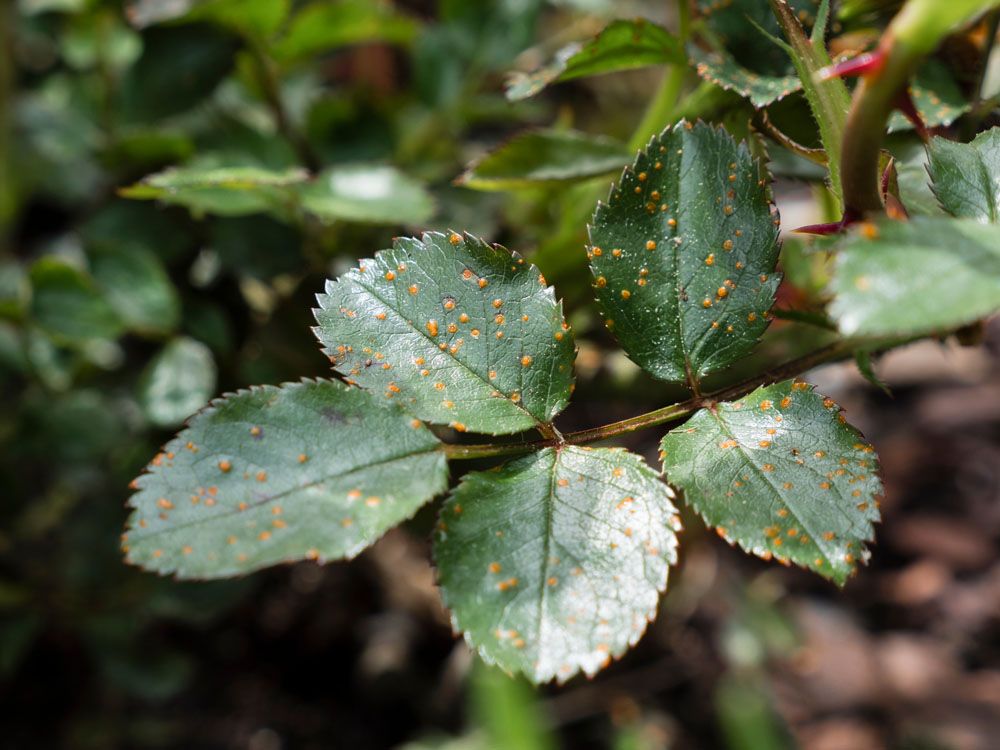
Rust on Roses
Rose Rust
Meta Description: Are your rose plant dying of rose rust? This article will help you to learn about what is rose rust? What are its symptoms, and how to treat rose rust?
If we talk about the worst combination in the plant world, then rust and rose are favorites to win the competition. Nightmare for the rose gardeners, Rose rust, is a fungal disease that not only ruins the beauty of the roses but also kills the plant if left unchecked. It is most common in the Western US, North US, and Europe, where environmental conditions are much favorable for its growth. Pacific Coast of the United States has a perennial problem of rust as the conditions there, like mild temperature and high moisture, are very conducive for its growth. The extreme conditions of winter and summer of the Midwest US are less favorable for its growth, so there it is not a major problem. However, the changing climate is becoming more favorable for it. It affects a lot of rose cultivars but doesn’t move to other plant species. Proper management of this disease is needed at the right time because if it is left untreated can defoliate the plant completely, ultimately killing the plant.
Cause of Rose Rust:
Rose rust is caused by several species of fungus family Phragmidium. Almost nine species from this family cause this disease. These fungi belong to the biotrophs group of parasites, which means they need a living organism to survive and cannot survive on a dead plant. These species specifically cause diseases in rose plants and get introduced into the garden through some infected plant that we bring into the garden from the nursery or any other place. Once they get into your garden, they can survive over winter into the plant debris, and soil surface and again continues to producing spores in the spring. The newly produced spores spread to other rose plants through wind, rain, and insects and start their infection. High moisture and low temperature are very favorable for disease development.
Symptoms of Rose Rust:
The rose rust is highly specific to rose species and does not affect other plant species, unlike the other rust species that have alternate hosts also. It starts its infection from the lower side of the leaves and spreads to the entire plant eventually. Orange pustules appear on the lower side of the leaves and become bigger as the infection progresses. Along with orange pustules on the lower side of the leaves, yellow spots also appear on the upper surface of the leaves. The most infected leaves fall off prematurely, affecting the photosynthesis of the plant. It also affects the stems, and stems become distorted and curly. The fungus produces its spores after every 10 to 14 days, which start their own infection, and the cycle continues. The disease signs first occur on the older leaves than the young ones. Fall and spring are most favorable for its growth due to the optimal environmental conditions in these weathers.
Management of Rose Rust:
Follow the following point to get rid of the rose rust:
Plant the rust-resistant varieties in your garden and check all the plants for rust while purchasing them and bringing them to your garden.
Prune the extra branches and plant the roses at a recommended distance to allow the proper air circulation.
If you find any initial symptoms of the infection, prune out that part and burn it or bury it to avoid the spreading of the infection to other rose plants.
Use fungicides containing triforine and myclobutanil as active ingredients. These fungicides are helpful against rust.
Follow all the instructions given on the label of the fungicides.
